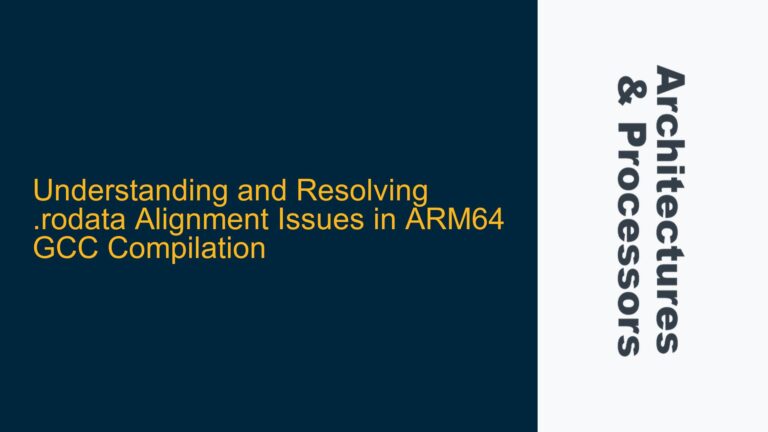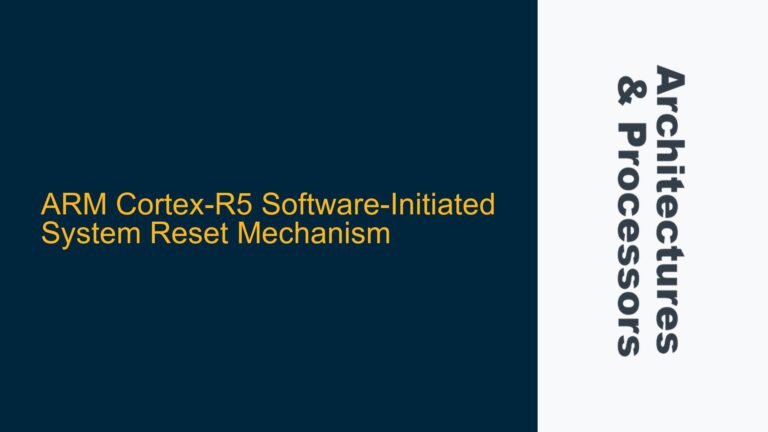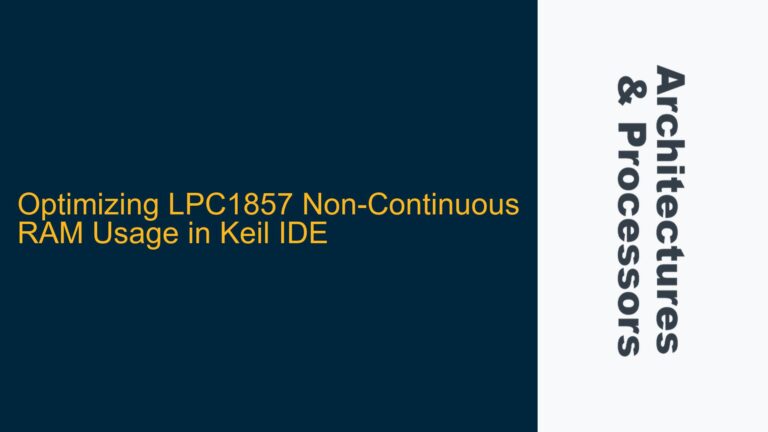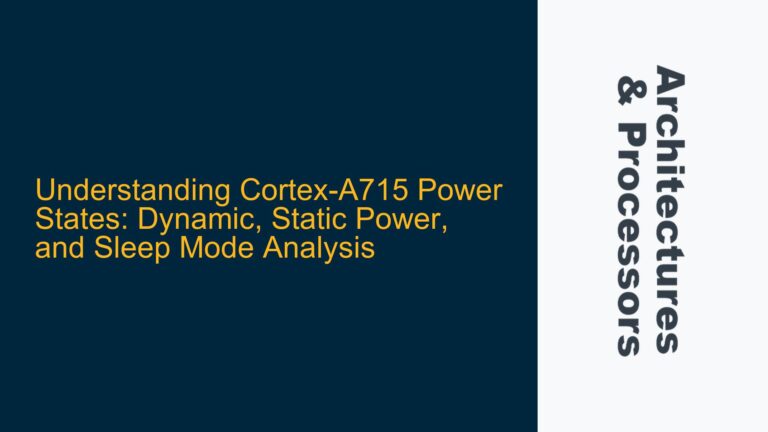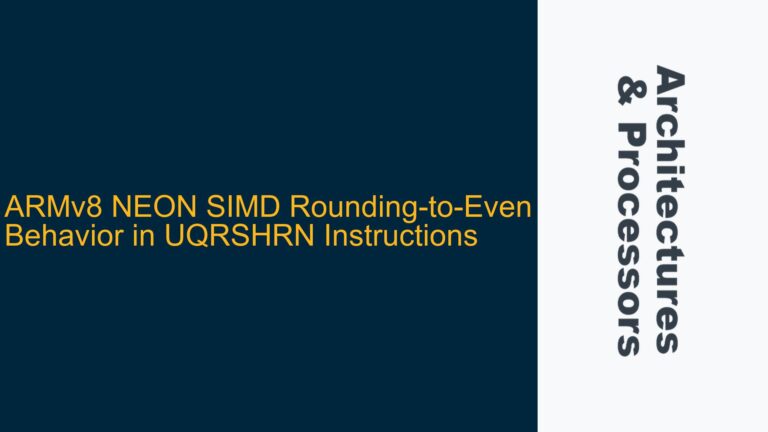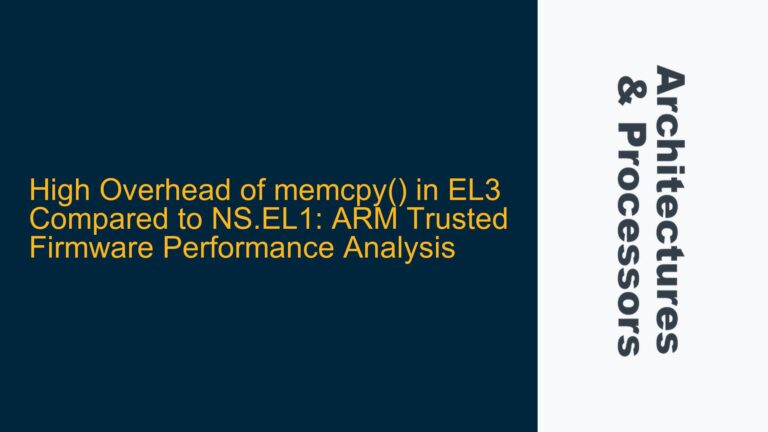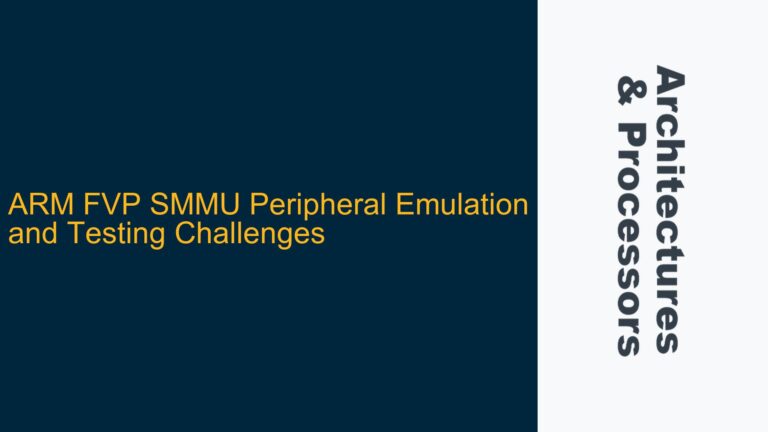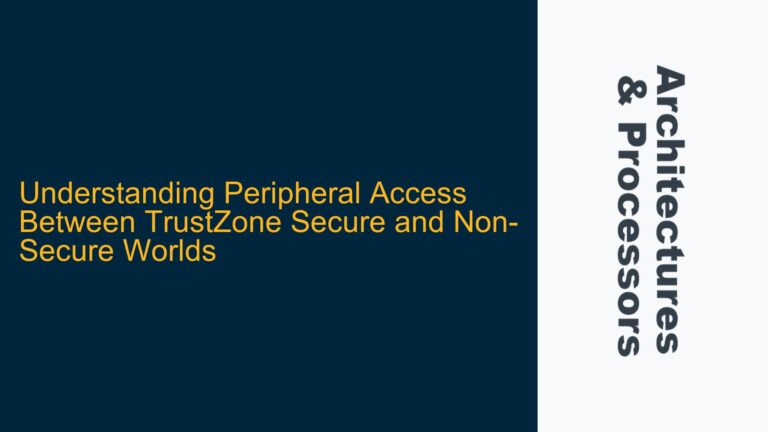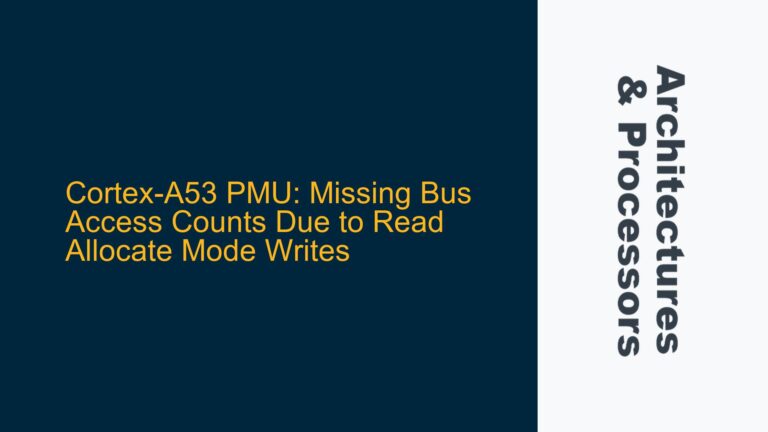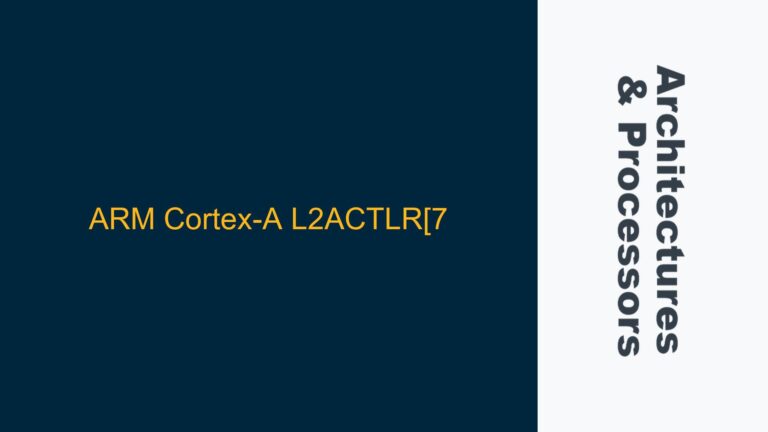and Resolving .rodata Alignment Issues in ARM64 GCC Compilation
ARM64 GCC Doubleword Alignment for .rodata Strings When working with ARM64 architectures, particularly on platforms like the Raspberry Pi running a 64-bit OS, developers often encounter specific alignment requirements for different sections of their code. One such section is the .rodata segment, which stores read-only data, including string literals. The alignment of these segments can…
